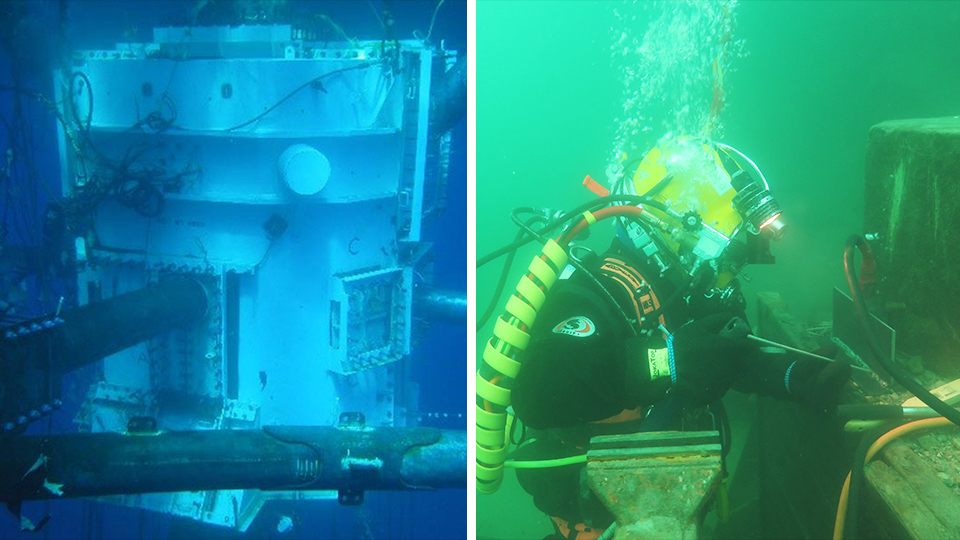For underwater, or hyperbaric, welding to be carried out successfully, knowledge of welding methods and hands-on experience of them, safety planning, appropriate work arrangements and equipment, and special skills in underwater welding are required. Even though the costs related to underwater welding are high, the method is still often more cost-efficient than the alternatives.
Wet or dry welding? The choice of welding method depends on the requirements set for the weld
There are two types of underwater welding:
- Wet welding: In this method, the piece being welded comes into direct contact with water. The diver-welder performs the weld at a hydrostatic pressure determined by the working depth. Stick welding is typically used for this process.
- Dry welding: In dry welding, a chamber is created around the region that is going to be welded. Water is then pumped out of the hyperbaric chamber either completely or partially. It is replaced with a gaseous mixture, such as oxygen or helium and oxygen.
The choice of method is primarily determined by the requirements set for the weld. In dry welding, the goal is to achieve a standard that would be achieved with the corresponding process carried out on dry land. The goal for wet welding is typically to achieve quality that is on an appropriate level for the application.

Image 1: Oxylance
Image 2: Luksia
Requirements for a diver-welder’s qualifications and work are set out in standards
The AWS D3.6M-2017 Underwater welding code, prepared by the American Welding Society, is a comprehensive standard that defines the requirements for qualification tests for diver-welders, welding tests required in the preparation of the weld, and the quality requirements for the completed weld. The standard sets strict requirements, and a client should ensure that the welding company is aware of them before commencing underwater welding.
SFS-EN ISO 15618-1:2016 Qualification testing of welders for underwater welding provides slightly different definitions for qualification tests. From the client’s perspective, both standards are applicable and can be used. Masino’s welding professionals have expertise in these standards and can offer advice on matters related to them.
Quality that meets the requirements of the standards can be achieved with the correct equipment and filler materials
Standard AWS D3.6M-2017 defines the quality requirements for the completed weld as follows:
- Class A: welds for which the requirements are similar to those for corresponding welds performed on dry land
- Class B: welds with properties that are in parts weaker than those of the original weld or a weld performed on dry land
- Class O: weld requirements are determined on a case-by-case basis
In practice, performing class A welds presents several challenges. In wet welding, water causes the weld to cool down quickly. In steel, this rapid cooling can affect the microstructure of the weld, lowering its deformation capacity, for example. In weld bend tests, this manifests as cracking. Large quantities of hydrogen form in the weld, reducing its ductility and making it more prone to cracking.
The class B requirements can be met if correct filler materials and equipment are used and qualified and experienced diver-welders perform the work.
Make use of Masino’s expertise and equipment related to underwater welding
Masino has strong expertise in welding techniques and products for challenging welding applications, such as underwater welding. Our expert team is on hand to offer advice on the suitability of different welding methods and products for various applications.
Contact Masino Welding´s professionals.
Read more about Masino’s extensive range of welding accessories and filler materials.
This blog post was written by Masino Welding’s sales director Pasi Hiltunen, DI, IWE. He has gained strong technical expertise from welding projects for international companies.
